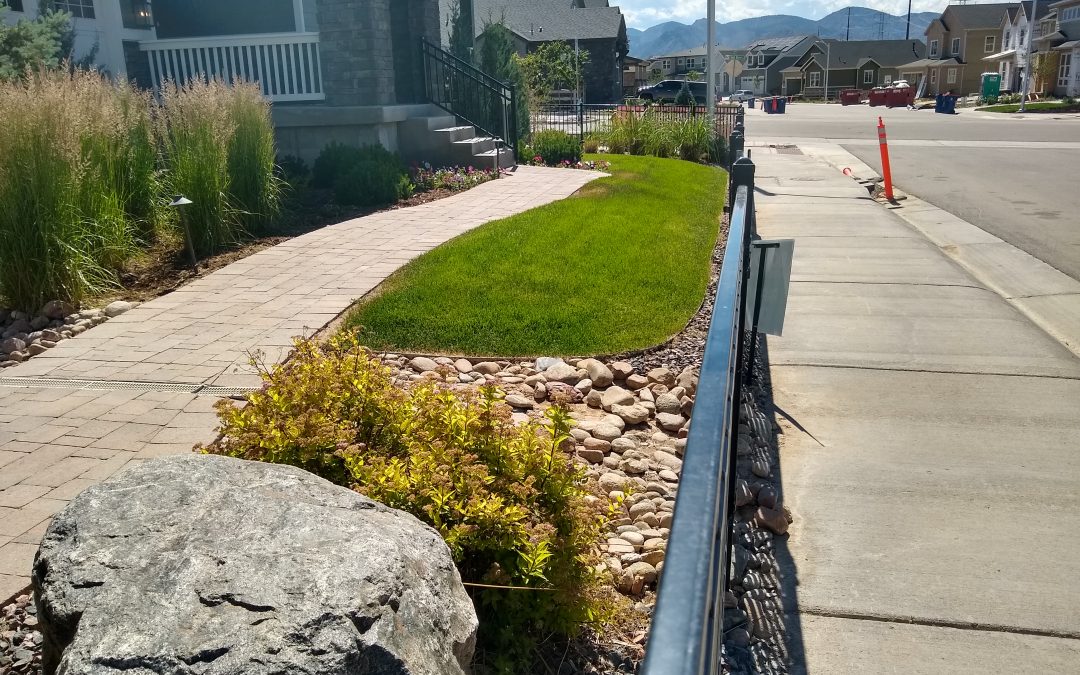Sterling Ranch, a conservation-oriented, fast-growing Douglas County community, is launching the first commercial effort to harvest rainwater in Colorado.
If the commercial pilot project succeeds, it could be used statewide to reduce water use in new developments, creating a supply of water that legally hasn’t existed before.
Andrea Cole is general manager of Dominion Water and Sanitation District, which serves Sterling Ranch. She said the project should prove that rain that runs off paved surfaces in developed areas can be used without harming natural water supplies that existed prior to development.
“When you change the landscape to a hardscape you produce more runoff,” Cole said. “The point is to capture the water off of a developed site without taking the water that would naturally be there.”
Sterling Ranch has been monitoring rainfall and infiltration of water into soils to ensure that the proposed collection system is gathering only the additional runoff from hard surfaces, and not the historic amount that the prairies collected pre-development.
Sterling Ranch must also convince its bigger neighbors, including Denver Water and Highlands Ranch, that Sterling’s rainwater collection is, in fact, a result of higher runoff from paved surfaces, not from the naturally occurring rain that falls in Douglas County.
“We’ve already heard from Denver and Centennial (the water district that serves Highlands Ranch) that we will have to prove we are not harming their water rights,” Cole said.
Swithin Dick, Centennial’s water rights administrator, said his agency was taking a wait-and-see approach to the rainwater pilot.
“If their application explains a project and plan that does not have the potential to injure Centennial’s water rights, and is consistent with existing law, it is not likely Centennial will oppose it,” Dick said via email.
Denver Water spokesman Todd Hartman said the agency had not yet taken a formal position on the project.
While collecting rainwater for drinking and irrigation is common elsewhere, it has been illegal in Colorado until recently because every drop of water that falls to the ground is owed to the rivers and streams, under the state’s 150-year-old allocation doctrine known as Prior Appropriation.
In 2016, Colorado legislators passed a law allowing individual homeowners to collect rainwater in two barrels per property with a combined storage capacity of up to 110 gallons, and also authorized a pilot program to see if a larger-scale, commercial effort could be done without harming downstream water users.
Harold and Diane Smethills began developing Sterling Ranch in 2004 and it now has 1,324 homes and will eventually have 12,050. The homes are among the most water-efficient that can be built and utilize small lots, hyper-efficient faucets and showers, and separate meters for indoor and outdoor water use.
Most Douglas County communities rely heavily on wells that tap water from deep, non-renewable aquifers, but heavy pumping over the years has lowered the aquifers’ levels. Water was already in short supply when Smethills first proposed Sterling Ranch, and he had to convince Douglas County planners that he could build the new development using much less water than the .75 acre-feet per single-family home the county required at the time. He also had to prove that he could do it using renewable surface water supplies in the South Platte River Basin.
He was eventually able to convince county planners that he could serve the community using .40 acre-feet of water per home, a number that now is closer to .20 acre-feet. An acre-foot equals 326,000 gallons, or enough to cover an acre of land with 12 inches of water.
Smethills and his team have been awarded two state grants worth roughly $111,500. The latest grant, awarded in March, will be used to help complete the feasibility studies and begin design work.
Cole said the project should generate 400 acre-feet of water annually that can be captured and used to irrigate the community’s small parks, allowing the community to use its existing supplies elsewhere.
But hurdles remain. Sterling Ranch may have to seek new legislation in the face of new stormwater rules that require separate storage facilities for stormwater and rainwater, Cole said, because the new rules would significantly increase the capital costs of the collection and distribution systen.
And as with almost all new water projects seeking a legal right to collect water, the project will have to go through an extensive review in a special water court, where anyone who has a water right in the region can submit concerns and challenge the process.
Sterling Ranch will apply to water court later this year, Cole said, and because of what she believes will be significant opposition, she expects it to take up to three years to complete the legal process and win the right to legally collect rainwater.
“Will there be opposition? Yes,” said Smethills, “Everybody else is watching to see how we do and if we can get it through water court. We’re at the bleeding edge. But this isn’t amateur night. We’ve spent millions of dollars to capture this data.”
Jerd Smith is editor of Fresh Water News. She can be reached at 720-398-6474, via email at jerd@wateredco.org or @jerd_smith.
Fresh Water News is an independent, nonpartisan news initiative of Water Education Colorado. WEco is funded by multiple donors. Our editorial policy and donor list can be viewed at wateredco.org


 Print
Print